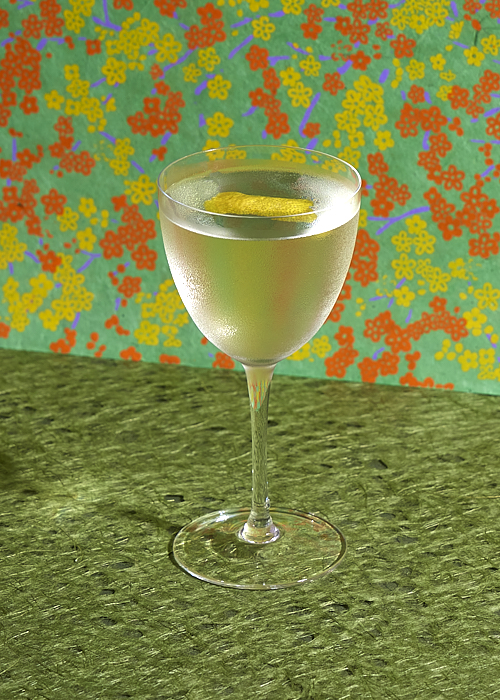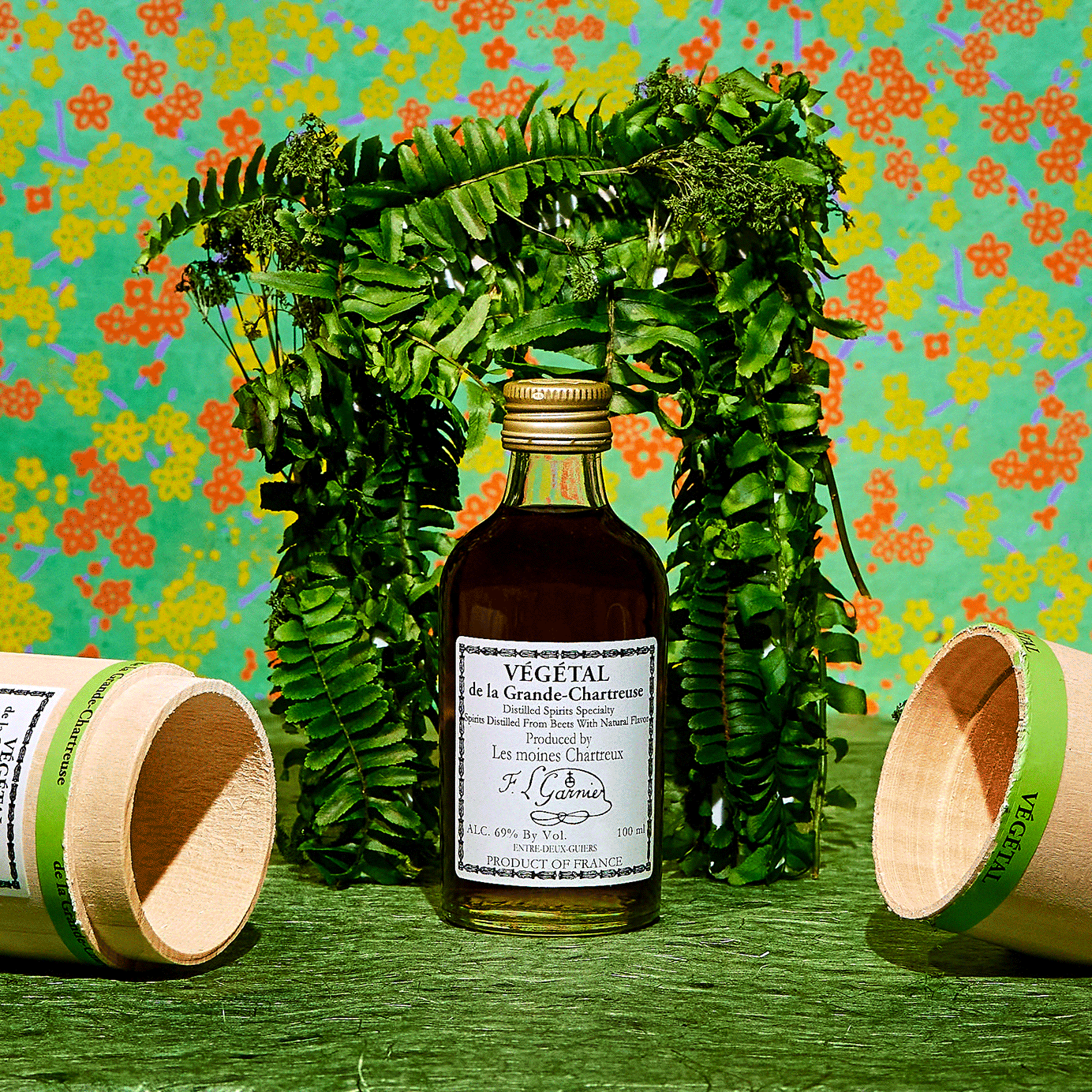Long beloved by bartenders, Chartreuse skyrocketed in popularity during the pandemic among home drinkers seeking to hone their mixology skills and recreate the classics. While mainstream liquor brands lapped up the surging spirits sales, the Carthusian monks who produce the green and yellow liqueurs took a different route: Rather than meet the increased demand, they decided to cap production in 2021. Then, in January 2023, a letter from Voiron, where Chartreuse is produced, announced that the liqueur would be sold under allocation in all existing markets, including France.
“When the monks made the decision to tap production, it was so they could live more of a monastic life, as well as be more conscious of the environment in the short term,” explains Tim Master, senior director of specialty spirits for Frederick Wildman & Sons, Chartreuse’s American distributor. “When Covid hit, Chartreuse grew 50 percent in one year. They didn’t think it was in their best interest to keep up.”
The Carthusian monks have produced Chartreuse since the early 1700s, with the present-day recipe finding its roots in a 1605 “elixir for long life.” The concoction, containing over 100 botanicals, was tweaked for the green and yellow bottlings known today. But what many may not know is that a version of the original Chartreuse is still distilled in accordance with the 17th- century recipe.
Called “Élixir Végétal de la Grande Chartreuse” in France, and “Végétal de la Grande Chartreuse” in the United States, Végétal launched stateside late last year and is slowly starting to appear in cocktails on bar menus.
Végétal was brought into the U.S. not as a substitute for green or yellow Chartreuse, and certainly not as a volume play, Masters says, but instead to tell more of the story of Chartreuse.
“Végétal is such an esoteric item and it’s important to tell its story because our mission here is to prolong the monks’ existence,” he adds. “This isn’t a three-to-five-year plan, this is a 300-to-500- year plan.”
Végétal versus Green and Yellow Chartreuse: Similarities and Differences
Affectionately called “the elixir,” Végétal is the pure expression of the original Chartreuse. Where green and yellow Chartreuse are distilled multiple times and then aged in barrels, Végétal undergoes only one distillation and is bottled unaged in 100-milliliter packaging at 69 percent ABV. In essence, Végétal drinks like an undiluted, more concentrated version of green Chartreuse.
“After trying Végétal, green Chartreuse tasted almost diluted,” says Sal Rios, sommelier and mezcal consultant at Aldama, a Mexican restaurant in Williamsburg. Rios plans to include Végétal in a mezcal Martini riff on the restaurant’s menu this fall. “You can taste all of the herbs you find in regular Chartreuse but in such a concentrated way,” Rios says. “It just really preserves the original profile.”
Compared to the larger, more well-known Chartreuse expressions, Végétal has a comparatively low sugar content, which gives center stage to its 130 herbs and botanicals on the palate. As such, the bitter profile is extremely dense, meaning only a small amount is needed for a flavor experience similar to that of green or yellow Chartreuse.
“Végétal is a product that is distilled to an extremely high proof and bottled at an extremely high proof, but not intended to be consumed at that proof,” says William Elliot, executive bar director at Maison Premiere, who hosted the launch of Végétal in U.S. markets. “But what’s nice about that is because it’s so flavor-compact, you can use just a little bit and not affect the sugar content of your cocktail in a way that Chartreuse sometimes will.”
How to Use Végétal in Cocktails, According to Bartenders
As the alcohol content of Végétal is notably higher than that of yellow or green Chartreuse — which sit at 40 percent and 55 percent ABV, respectively — it’s important to know that it can’t be used as a direct one-to-one substitution.
“At 69 percent, it really packs a punch. Not just in alcohol content, but in flavor as well,” says Ian Alexander, bar director at The Dead Rabbit. “A little goes a long way.”
In the Dahlia, the Dead Rabbit’s Margarita-style cocktail, a teaspoon of Végétal brings the bright, minty, melon-flavored cocktail an herbal undertone. The elixir also adds a layer of complexity and an air of mystique, without muddying the drink or cloying the palate.
Other applications of Végétal include using in tinctures, as a rinse, or in a dasher bottle similar to cocktail bitters, which is Rios’s preferred method. Rios, who frequently experiments with mezcal cocktails, views Végétal’s aromatic profile as the perfect companion to the agave spirit.
“Chartreuse is a nice expression of herbs that adds a balance to mezcal that’s really hard to find anywhere else,” he explains.
In addition to tinkering with Végétal behind the bar, the product’s complex profile lends it to a range of culinary applications. At Maison Premiere, for example, they’ve dashed Végétal into freshly shucked oysters on the half shell.
“I know it sounds weird but the oysters pull out all this organic plant matter, these seaweedy flavors that exist in Chartreuse, too,” Elliot says. “People just don’t realize that Chartreuse has all these funky herbs ’cause there’s 130 of them.”
With production levels of Végétal not predicted to change in the coming years and its presence in the United States only expanding, now’s the perfect time to secure a bottle of Végétal and start experimenting for yourself.
A Recipe Using Végétal de la Grande Chartreuse
El Mágico, Aldama, Brooklyn

Ingredients
- 2 ½ ounces mezcal, such as Agua Mágica
- ½ ounce Italicus Rosolio di Bergamotto
- 1 dash Chartreuse Végétal
- Garnish: lemon twist
Directions
- Combine all ingredients in an ice-filled mixing glass.
- Stir vigorously until well chilled.
- Strain into a chilled Nick & Nora glass.
- Garnish with a lemon twist and serve.
